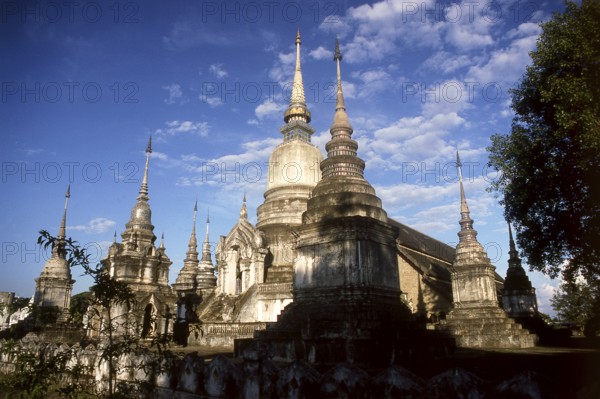
Caption
Wat Suan Dok (Thai: ?????????, which roughly translates as Flower Garden Temple) was founded by King Kue Na of Lanna for the monk Sumana Thera in the year 1370 CE. The temple was built in the centre of Wiang Suan Dok, a walled settlement of the Lawa people older than Chiang Mai itself.
Chiang Mai, sometimes written as 'Chiengmai' or 'Chiangmai', is the largest and most culturally significant city in northern Thailand, and is the capital of Chiang Mai Province. It is located 700 km (435 mi) north of Bangkok, among the highest mountains in the country. The city is on the Ping river, a major tributary of the Chao Phraya river.
King Mengrai founded the city of Chiang Mai (meaning 'new city') in 1296, and it succeeded Chiang Rai as capital of the Lanna kingdom. The ruler was known as the Chao. The city was surrounded by a moat and a defensive wall, since nearby Burma was a constant threat.
Chiang Mai formally became part of Siam in 1774 by an agreement with Chao Kavila, after the Thai King Taksin helped drive out the Burmese. Chiang Mai then slowly grew in cultural, trading and economic importance to its current status as the unofficial capital of northern Thailand, second in importance only to Bangkok
Date
Jul 24, 2013
Credit line
Photo12/imageBROKER/David Henley
Reference
BRK25F67_443
Model release
NA
Property release
No
License type
Rights managed
Available size
46,6Mb (2,8Mb) / 16,5in x 11,0in / 4946 x 3294 (300dpi)